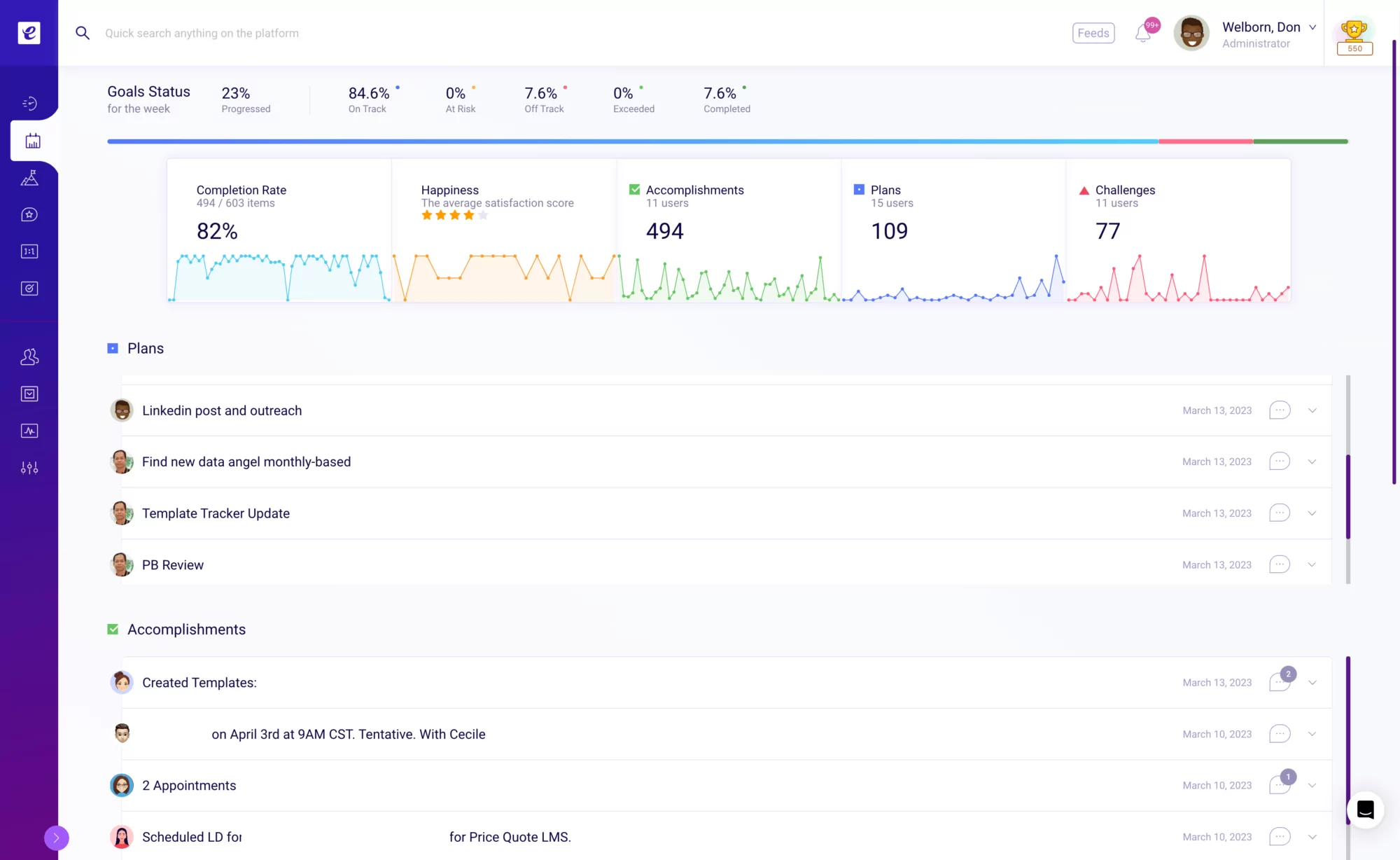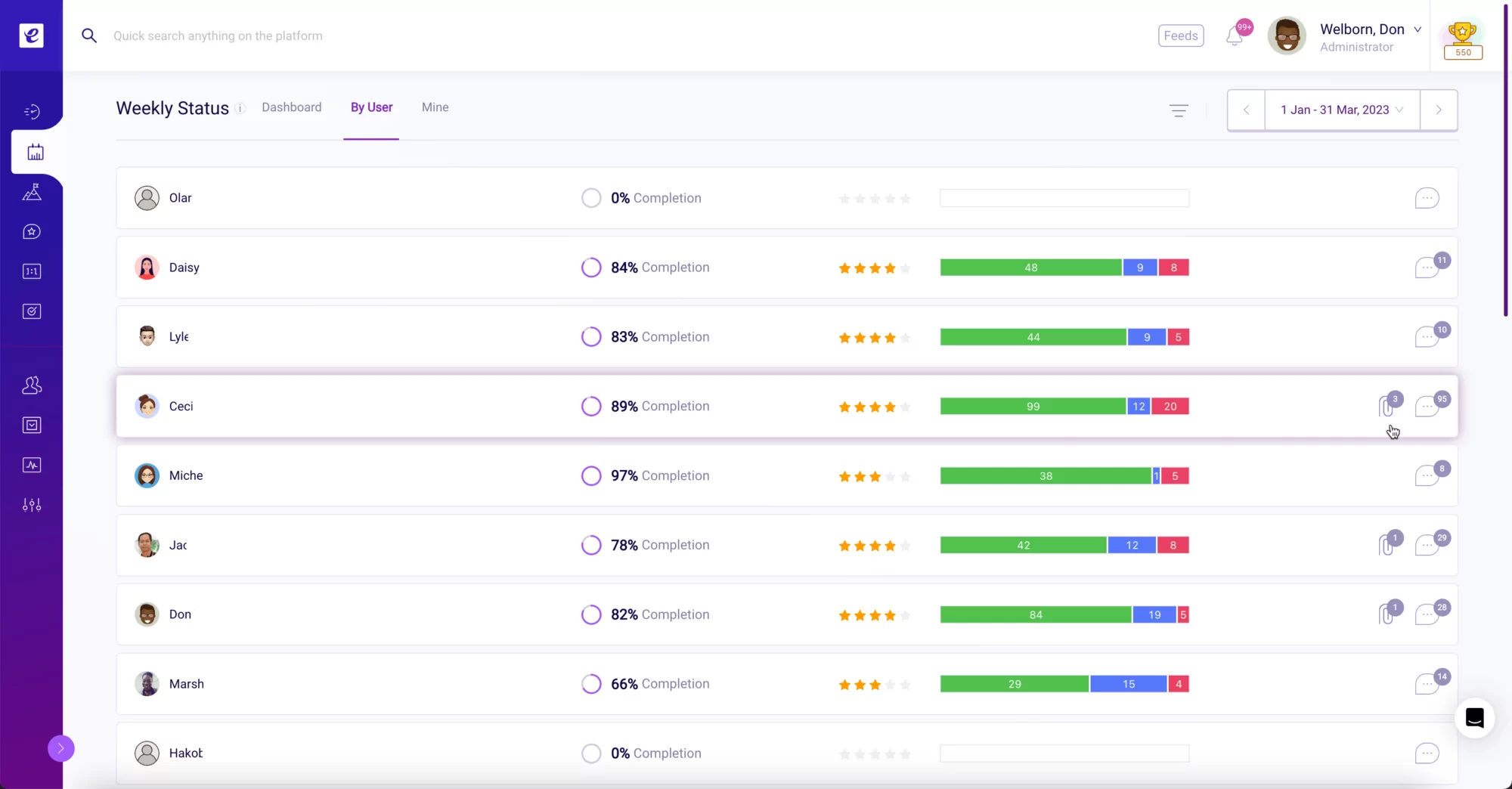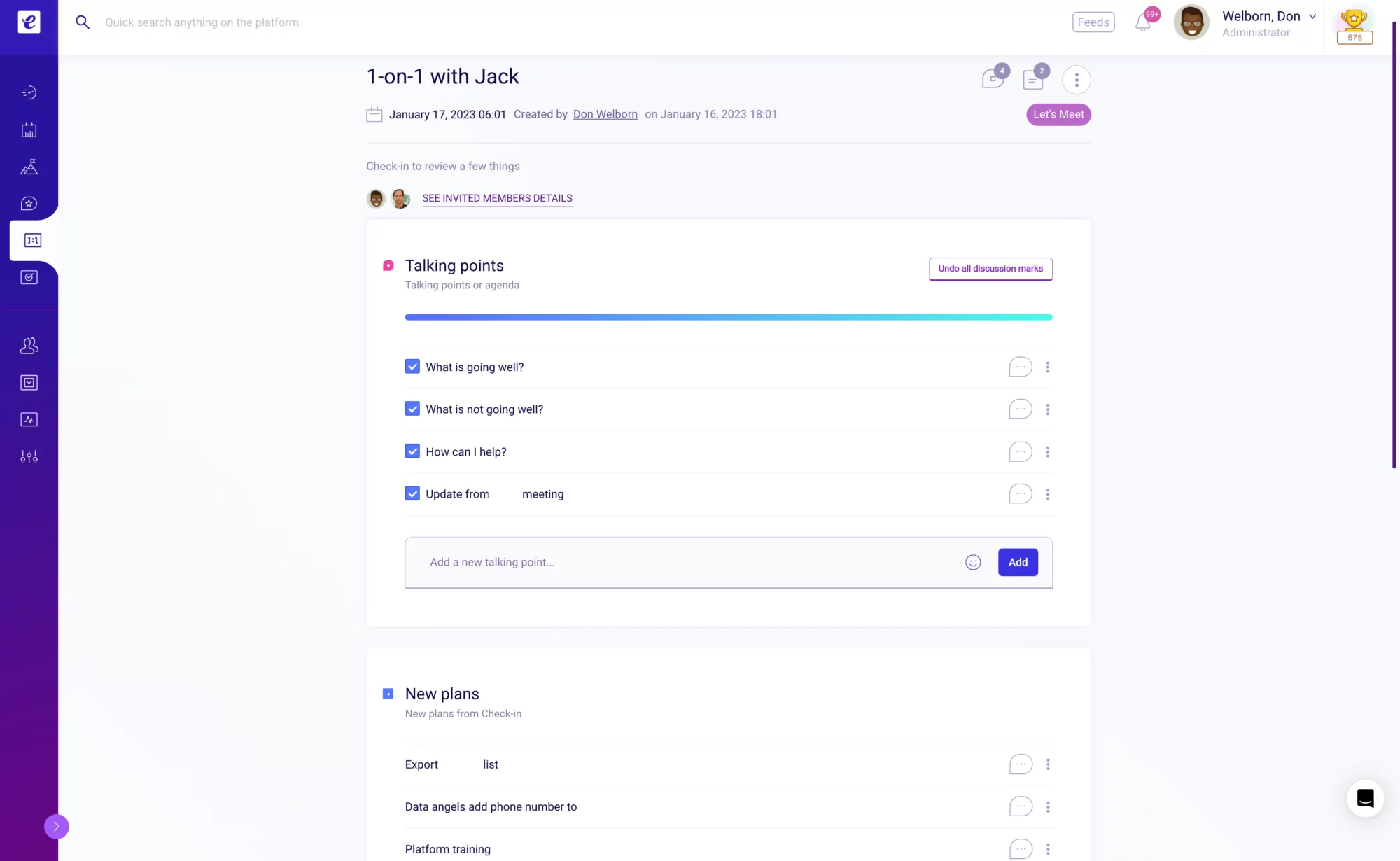Why We Switched to an Agile Way of Working – Weekly Status

It was the winter of 2016, and we were burned out. I mean, every single staff member at eLeaP was working hard to wrap up the 4th quarter and close out the year. We were all busy. But that was just the problem. We were all busy doing busy stuff, and none of it or very little of it actually mattered. Our sales were anemic at best. Our tech support was so-so. Our product roadmap was frankly pathetic as we had great ideas, but we were just spinning our wheels. We had to find a better way.

If this describes your workplace or team, don’t worry; it can get better. As president, it is my job to turn things around fast. I really didn’t want to discourage team members from being creative. They were working hard – on pet projects, on what they thought was important, and frankly, what I might have said to work on. So the problem wasn’t all on them. The problem simply was that there just was no transparency or even a way to measure our progress. However, even more, fundamental than that was the fact that what we were working on didn’t mesh with what we should have been working on. The alignment of individual objectives, goals, and projects did not jell with what, as an organization, we really should be paying attention to.
So like any good CEO, I asked our CFO to find us a solution. Well, it turns out that she was feeling a similar disconnect and searched for what she thought would be a panacea for our ailment. This tool helped us understand the concept of Objectives and Key Results or OKRs. Here’s a quick primer on OKRs. Some trace OKRs to 1954, but they got popularized in tech when Google’s founders, Larry and Sergey, incorporated them into their young company in 1999.
Now some of the concepts of OKRs really weren’t new to us. We had just stopped doing them, and when we attempted to resurrect the practice, we ended up half arsing it. We didn’t stick with the simple but critical parts of the weekly planning meeting and the weekly review meeting. These concepts come from agile methodologies, the weekly sprint where cycles are broken down into weekly cadences made up of planning at the beginning of the week and reviewing at the end of each week.

Planning your week
This is what I want to share with you. In our organization, this is something we adhere to with dedication and zeal. It is our Weekly Status program. Some might ask, but why so serious about this? Well, here’s why. By all of us agreeing to meet for 15 minutes every Tuesday at 11:00 am ESt and reviewing our week every Friday at 12:15 pm est, we made a pact with each other to be accountable to each other and to our company.
Why meet on Tuesday? Here’s the secret, it is totally up to you and your team or organization. I can tell you we tried meeting on Mondays but found that Mondays were too hectic to allow us to dedicate the quality time we needed for our weekly planning. Tuesdays turned out to be much better. If your team agrees to a Monday, then make it work. Each organization is different. Remember, one of the reasons this process works is commitment. If your team collectively agrees to a specific day and time, then you can hold each other accountable for showing up for these meetings.
What happens on Tuesdays at 11:00 am EST? We hoop on zoom and start the meeting. One thing to share. These meetings are not led by top leadership. Let someone else lead these meetings. We meet on Tuesday to share what we intend to work on for the week. We add all those into the [What are your plans this week?] section of the Weekly Status module in the eLeaP PSP. This system is pretty sophisticated but intuitive to enable any organization to quickly get up to speed using it.
Expanded capabilities
What can you add to your plan items? You can add attachments to the plan item. You can even use fun emojis in your plan (personalize it however you want). Something important to be aware of. While this exercise is simple, it is also incredibly powerful. As much as possible, we challenge each other to link our weekly plans to our existing goals. Remember I mentioned Objectives and Key Results (OKRs) earlier on. OKRs are Goals in the eLeaP PSP. By linking your weekly plans to goals, you indicate and align your short-term activities to the goals and objectives of your team, your organization, or even your personal goals.

Linking your weekly plans to Goals also brings about incredible transparency. We get to ask and challenge each other on why one is working on this or that. How are the items team members are working on connected to our goals? How is what you’re working on going to help us move forward as a team? How is this going to help us achieve our quarterly goals? This is the genius of the Weekly Status system. It works in concert with the Goals (OKRs) system to deliver clear goal alignment and, more importantly, a sense of working together to achieve common objectives.
Another powerful reason for these Weekly Status plans is that when the time comes for performance reviews, it is not really much of a surprise. You are able to see how a team member contributed to achieving your goals pretty much on a weekly basis. I can tell you this has reduced the tension and uncertainty that some staff and management experience in many companies. The question of why you are even working on something seems to be answered through this system.
Another invaluable component of the Weekly Status system is the communication and collaboration tools that exist. Using the file-sharing feature or the commenting and tagging system, team members are able to share resources, collaborate with each other, and notify team members of important project and task management issues. By the way, when you get tagged in a comment, you will see a notification in your [Feeds] section of the PSP. Don’t worry. We are not going to overwhelm you with email notifications that disrupt your work day.
As managers, there’s nothing more frustrating than trying to figure out what members of your team are up to. Use the filtering options in the PSP to quickly see what individuals are working on, what progress they are making, or what challenges they are experiencing. This is how you get to replace unworkable, stress-inducing reactive management with proactive, productive leadership.
You might be wondering what happens after you enter all these plans into your Weekly Status. Simple. You get to drag and drop plans to move them to [Accomplishments] or [Challenges], or if you feel they won’t be done in the current week, you can move them to [Next Week’s Plans].
One-on-Ones and Check-ins

Sometimes, we find that to work on certain things, we need more targeted meetings. Some of these items might be directly related to achieving our goals. In these situations, using the Check-ins tool to set up meetings automatically adds these to your calendar and weekly plans for the week.
Once your One-on-Ones are done, the system emails a summary to participants and closes out the meeting from your weekly plans. This is how eLeaP works to support our team members in accomplishing goals and continuing to punch above our weight class.
We built the eLeaP PSP to solve our own challenges. Now, we want you to experience the same transformation and realize the incredible results we achieved using this system.
Closing out the week:
On Fridays at 12:15 pm EST, we meet to review our week. Each team member shares their weekly accomplishments, challenges, and other news. This is a chance for team members to also set up meetings for the next week in case they need one-on-one time with each other or groups need to meet. This Friday’s meeting is also important as a way to celebrate big and not-so-big wins. As a team, it is important to acknowledge difficulties and challenges, but it is also essential that you don’t forget to mark and celebrate wins and achievements.
The Weekly Status system enables us to move forward together. It enables us to plan our week with specificity and alignment with our OKRs and goals. It ensures that we meet to review our week and plan ahead for the next week.
Here are some things we talk about in our Friday meetings. We talk about new sales and new customer onboarding. We discuss appointment-setting challenges, and we also brainstorm on marketing programs and partnership opportunities. The idea of these Friday sessions is also for management to share important information regarding company happenings.
Lastly, we ask team members to put down a happiness score for the week. What is a happiness score? It is our way of asking ‘How satisfied are you with your progress this week”? We ask and monitor this because it is an important barometer of your team’s health and, even more, important your member’s disposition regarding their week. Since the pandemic, we have heard about how workers want what they do to matter. They want to see the impact of their activities. They want a chance to be heard when things are good and when they are not so good. This gauge provides crucial feedback not just to management but also to team members. And yes, we support each other through the ups and downs.
You might be wondering how you are going to do this in your organization. You have several thousand team members. They are all spread out. Guess what? You can set up team meetings to review your week. It does not have to be all hands – even though you can also do that. Sometimes folks have to miss the meeting, but they ensure that their weekly plans are advanced to the proper new status: accomplishments challenges or moved to next week’s plan. The idea is that this process is maintained (without fail if you can).
What has been the outcome? Our team has been aligned and productive in ways that will shock you. We tell people if you compare our productivity against other companies much larger than us, you will be amazed at how much we are able to accomplish. It does not mean there are no challenges. It does not mean the meetings are fun all the time, as we sometimes have to deal with tough subjects like slacking team members. I will tell you, though. I won’t trade this for going back to how we used to just wing it and hope things work out.
If you want to give this process a go and have questions, feel free to reach out to us. We are happy to share. I encourage you to give the eLeaP PSP a go, as this process truly needs a platform to support it and bring out the best results.
So to answer the question we raised at the beginning of this article. My Weekly Status tells me how productive, engaged, and happy my team is. And I won’t trade that for anything.